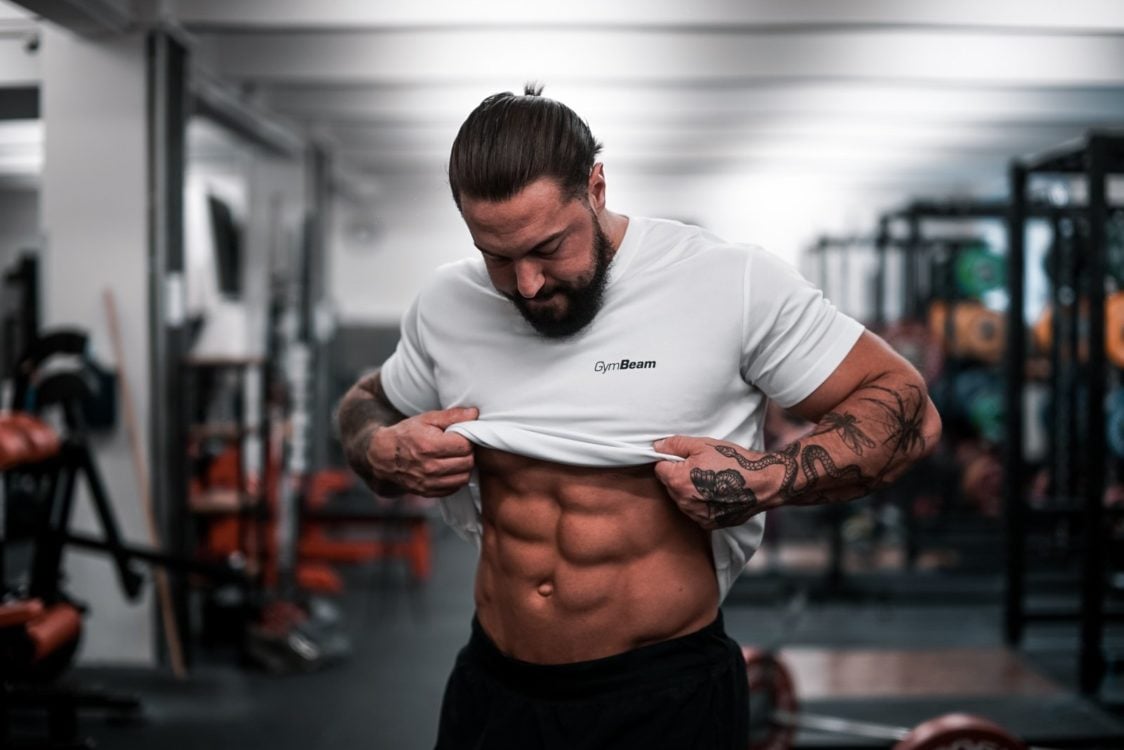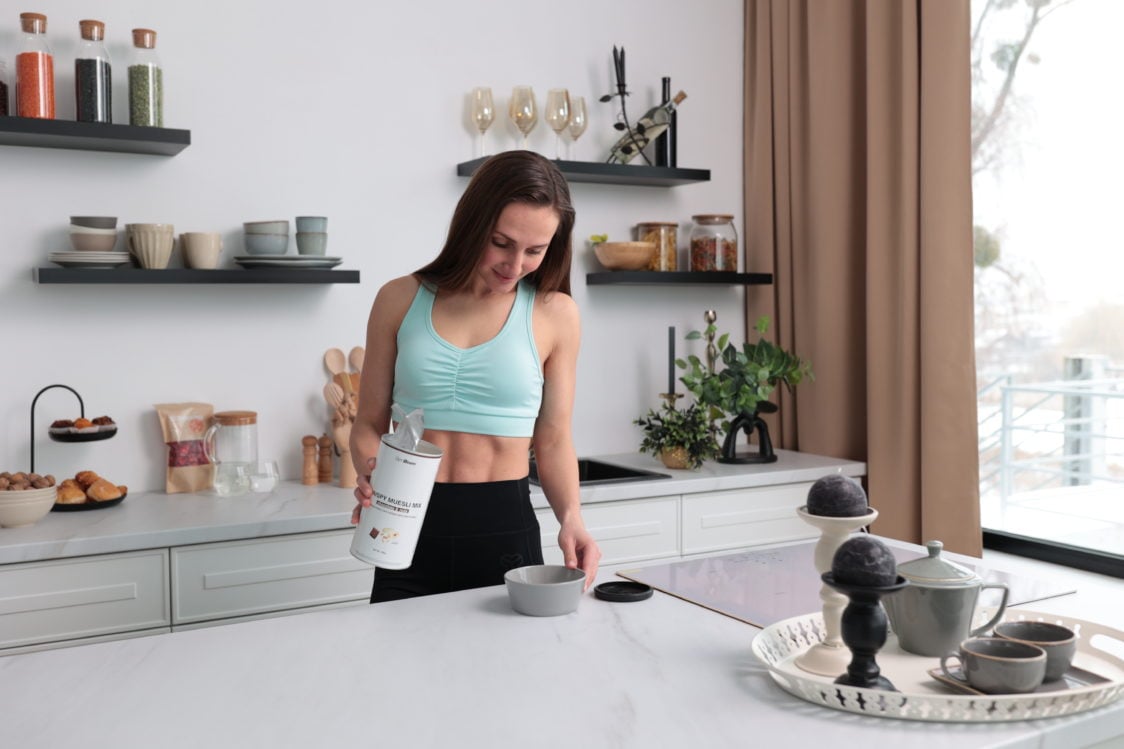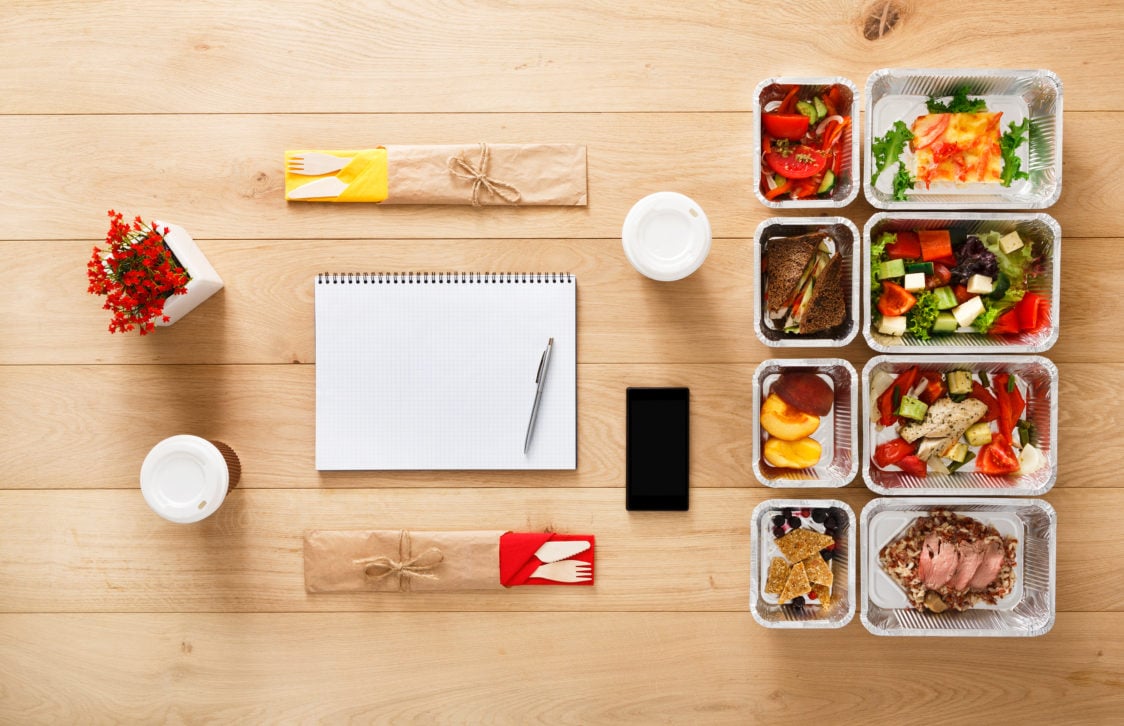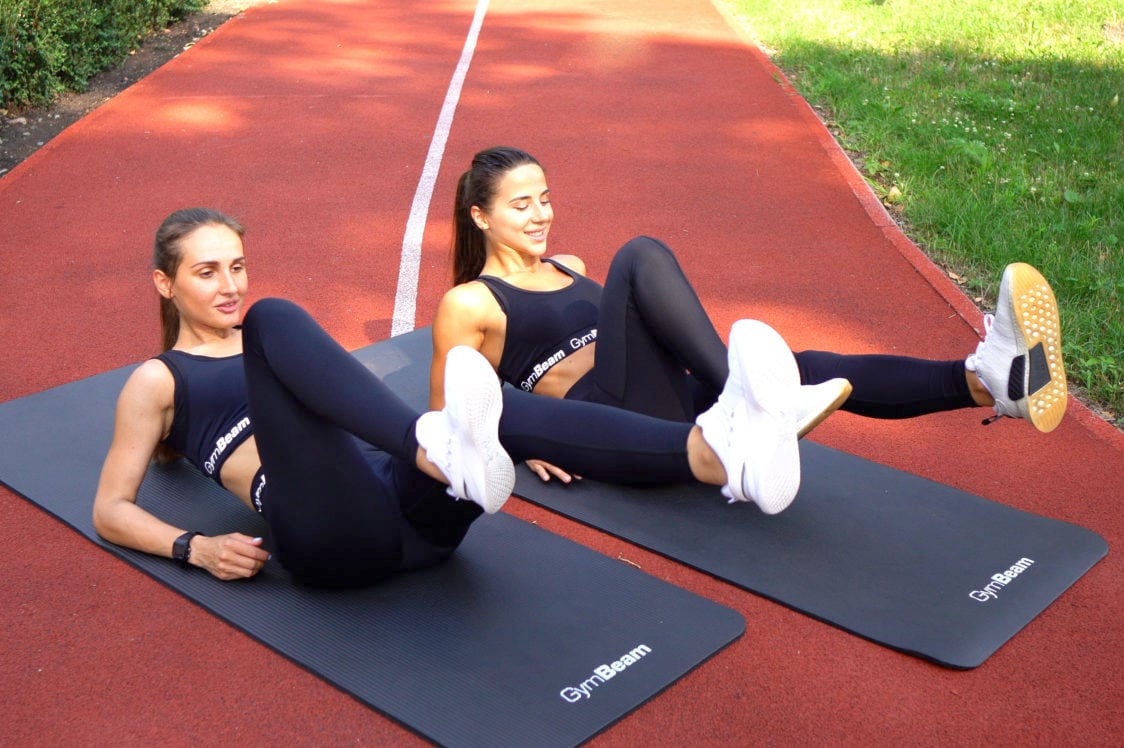Table of Contents
Are chiselled abs or a six-pack one of your dream goals? You’re definitely not alone. Sculpted abdominal muscles on an athletic body are a modern symbol of aesthetic perfection, which, however, is very often ephemeral. Thanks to winning a genetic lottery, some people have a six-pack all year round without much effort, while others have to take a more difficult and winding path to get there. Not to worry though, this is no Mt. Everest climb. All you need to do is make a few changes in your lifestyle over the long term and work consistently towards your goal.
What is the most important thing for building a six-pack?
You have to be aware that exercise alone isn’t enough to get a six-pack. Other factors also have an influence. But unfortunately, you can still come across internet articles and famous people who claim that doing hundreds of sit-ups a day works best for chiselled abs. If you’re one of the children of the 90s, you may remember pop princess Britney Spears claiming to do 1,000 sit-ups a day at the height of her fame. The whole world admired her for her toned abs. But in some interviews, she forgot to mention that she also goes running, does yoga and practices dance choreography daily. She probably also kept a strict diet, all under the supervision of strict trainers. Moreover, this doesn’t mean that if you emulate her plan, you’ll get the same results.
The truth is that in order to see your pack of abdominal muscles, you need to have a certain percentage of fat on the body. This is influenced by inherited genetic predispositions from our parents, which also determine the distribution of fat in the body. Genes have a huge influence on whether our abs appear with, say, 22% body fat or whether you need to lose weight down to 18% or less (in the case of a woman).
Furthermore, not all of us can have a six-pack, some have to make do with a four-pack and others even have an eight-pack. This, in turn, is determined by the anatomy of the rectus abdominis muscle which has bands of connective tissue crossing it horizontally. These bands give the appearance of multiple packs stacked on top of each other on either side of your abdomen. Once toned, the rectus abdominis becomes your 4, 6, or 8 pack. If there are only 4, don’t be disappointed. Arnold Schwarzenegger had the same number in his prime. [1]
If you want to learn more about why abdominal exercises alone are not enough to lose belly fat, read our article Crunches and Sit-ups: Why They Won’t Help You Lose Belly Fat?

How to lose belly fat and get a six-pack?
For most of us, abdominal muscles are hidden under a layer of fat, but this is perfectly natural from an evolutionary point of view. If you want to sculpt your abs, you will need to lose weight overall. This cannot be done without a comprehensive approach that covers a caloric deficit. You will have to reduce your maintenance intake (not losing weight or gaining weight) by 10-20% or 500 kcal. In this way, you simply start to lose weight gradually. This can be achieved by reducing energy intake from your diet, increasing energy expenditure through exercise and sport during the day, or a combination of these two approaches. [2–4]
In the quest for chiselled abs, you should not forget about comprehensive strength training. Include several ab exercises for targeted strengthening of this area. After all, the abdominal muscles are just like any other. Without sufficient load, they will not enlarge on their own and will not be as visible. Moreover, support your healthy diet and regular exercise by sleeping enough and taking care of your mental health.
Interested in basic advice and specific steps for losing belly fat? Then you shouldn’t miss our article Lose Belly Fat and Get in Shape with Our Simple Guide.

10 tips for a six-pack
A six-pack is best achieved by making simple changes to your diet and training plan. By modifying your diet, you will reduce your caloric intake, making it easier to achieve a caloric deficit. This will promote weight loss and reduce body fat percentage. By exercising and working out properly, you will build perfectly shaped abs.
How to sculpt your abs with the help of a diet?
1. Start slowly and go easy
The journey to toned abs is not a sprint, but rather a long-distance run. That’s why you have to be careful not to overdo it in the beginning. If you go all-or-nothing and start losing weight by starving yourself or drastically halving your energy intake, you will probably run out of steam very soon. At the same time, health problems related to a low dietary intake can occur. It is better to spread your efforts over the entire length of the course and incorporate changes in diet and other areas of your life gradually.
- To start, set a calorie deficit between 10-30%. Higher values are not sustainable in the long term and may pose a health risk.
- Use our online energy intake calculator to calculate your calorie and macronutrient (protein, carbohydrate, fat) intake based on your body parameters and daily activities.
- When creating a diet for weight loss, you should not only follow the calculated numbers, but also the rules of a healthy eating. A healthy plate, for example, can help with this by estimating the portion size of protein, carbohydrates and fat in one go.
- The final amount is then adjusted according to how many calories and individual macronutrients you want in your meal.
- This will give you a basic recommendation that you can start to follow and see how your body reacts to the changes. The ideal is to monitor body weight and a few other body parameters such as waist, abdominal, hip or thigh measurements.
- According to the results, you can then adjust the values after a month or a longer period of time.
If you want to track your energy and macronutrient intake in more detail, then you shouldn’t miss our article A Simple Guide on How to Count Calories and Achieve Your Goals.
How long does it take to lose a kilogram of fat?
To lose 1 kg of fat you need to burn 7700kcal. To start with, based on changes in your diet, you get into a daily calorie deficit of 500 kcal. While this may seem like a huge number at first glance, it is not. In fact, with this deficit, you may be able to burn a kilo of fat in as little as 15 days. So in a month you can say goodbye to 2 kg of fat, which is the ideal pace for weight loss. [5]

2. Use meal prep
Quality preparation is half the battle, even when changing your diet. Once you have planned what you will eat during the day, you need to purchase everything you need and can start cooking. There’s no need to have all the courses prepared days in advance. It is enough to prepare the meat, side dishes and other meals that take more time to make. It can take only 1-2 hours during the weekend. Then you just portion food in an individual portions in containers and add fresh vegetables, fruits or anything else. When all portions run out, simply make time to prepare more food one day a week and repeat the process.
With meal prep, you can avoid improvisation and ravenous hunger, which could make it easy to succumb to sweets or tempting fast food. It’s also a good idea to have healthy snacks on hand in the form of fresh fruit, a mix of nuts and dried fruit or protein bars. These foods can help you fight off hunger and sweet cravings.
This can easily prevent you from eating a whole chocolate bar or packet of crisps, which could mean exceeding your daily calorie intake and saying goodbye to a calorie deficit. But even in the case of healthy snacks, you should keep an eye on the quantity and count calories.
If you’re wondering how to make meal prep even more effective, you shouldn’t miss our article Sample Meal Prep Plan for 2000 Kcal.

3. Add protein and fibre to your diet
In a calorie deficit, it’s only natural to be hungry more often, so you look for ways to eat satiating meals while not exceeding your calorie intake. Fortunately, there are foods that have a high satiating capacity. These include high protein foods such as meat, dairy, eggs, tofu, tempeh, whey or vegan protein. Therefore, it is important to have protein in every meal and combine it with carbohydrate and fat sources. The aforementioned healthy plate will help you with this distribution. For weight loss, it is generally recommended to eat about 1.2 – 2g of protein per kilogram of body weight, depending on physical activity. [6]
In addition to protein, fibre can also help increase satiety. It can be found naturally in fresh and dried fruit, vegetables, legumes, nuts, oats, quinoa and other cereals or legumes, or in wholemeal bread. Its sources also include psyllium, apple fibre or a complex supplement in the form of a powder that can be added to yoghurt or drinks. This is because fibre binds water as it passes through the digestive tract, allowing it to pass through the stomach more slowly, thus keeping you full longer. The recommended daily intake of dietary fibre is between 25-30g. [7]
You can learn more about the benefits of psyllium and other types of fibre in our article Psyllium – A Beneficial Fibre Not Only for Proper Digestion.

4. Save calories and make smart use of low-calorie foods
Another way to make your diet healthier is to use low-calorie foods and a variety of lower-sugar and lower-fat alternatives. Vegetables, for example, are not only suitable for salads, but also as a low-calorie substitute for classic carbohydrate side dishes. This will reduce the energy value of the whole meal, increase its volume and increase the amount of fibre. This way, the meal will keep you full for longer.
How to reduce the energy value of food with low-calorie alternatives?
- Grated zucchini or baked spaghetti squash can be used instead of the classic spaghetti.
- Finely grated cauliflower is a good substitute for rice or couscous.
- Portobello mushrooms are ideal as a low-calorie alternative to a classic burger bun.
- Grated zucchini is also suitable for making your porridge more nutritious.
- Sliced eggplant can be used as a base for mini pizzas.
- Celery, beetroot or carrots can be used instead of potatoes to make vegetable fries.
- Pasta and rice can be replaced by alternatives made from konjac flour, which have only 7 kcal per 100g. This way you will save several hundred calories.
You can also save calories on flavourings and oils you use in cooking or baking. Use simple tips to reduce the amount of fat, sugar and calories in your food.
How to save calories when cooking and baking?
- Regular sugar can be replaced with sweeteners that are completely calorie-free or contain significantly fewer calories.
- A good example is calorie-free erythritol or xylitol, which have about 40% fewer calories than regular sugar. Chicory syrup, flavoured sweetener powders or flavour drops are also a good alternative.
- Spray oil is suitable for greasing a baking tray or for roasting vegetables or meat. This makes it easier to keep track of how much oil to use.
- High-calorie sauces can be replaced by ketchup sweetened with stevia or salad dressing, which contains only 0.9 kcal per serving. This makes every salad a delicious dish without extra calories.
- To flavour sweet treats, you can use ZERO chocolate or salted caramel flavoured syrup, which has 0 kcal per serving.
If you’re interested in other foods that can help you save calories, you’ll find them in our article The Best Alternatives to Side Dishes, Sugar and Sauces that Make It Easier to Weight.
You might be interested in these products:
5. Make a shopping list and don’t go to the supermarket hungry
If you can’t resist cookies, ice cream or mayonnaise salad, it’s safer to buy as little of these foods as possible, and ideally not at all. They’re full of sugar, fat and calories that won’t make your six-pack journey any easier.
More like the opposite. For example, one cup (460ml) of creamy ice cream contains approximately 1200 kcal, which is more than twice the calorie value of a normal lunch. In this respect, it is safer to stick to the rule of what you don’t have at home, you don’t eat, and thus create a more favourable environment for achieving your goals.
If you go to the supermarket, it is better to have a shopping list at hand and follow it. Also, it will be safer to go to the supermarket after food. That way you won’t have a strong urge to buy sweets and other snacks that might seem like the best way to fight off cravings in a weak moment. This way, you only bring home the food you really need to prepare the meals you have planned. But that doesn’t mean that sweets are off limits to us forever. The key is to stick to a long-term plan and not let a little detour derail you completely.
If you’re interested in more practical advice on grocery shopping, check out our article on 7 Tips on How to Make the Right Food Choices and Purchase Groceries.

How to sculpt your abs with exercise?
1. Establish a clear training plan
A well-developed training plan is another piece of the puzzle to achieving chiselled abs. Its foundations are based on comprehensive strength training. This is important for muscle development of the whole body and its overall strengthening.
In most strength exercises, you also activate the core of the body, the main part of which is the abdominal muscles. You can observe this especially during squats or deadlifts, when you use your core to keep the back stable and the abdominal cavity tight, which is important for the correct technique of the exercise. The advantage of strength training is also the fact that it properly accelerates the metabolism. After it’s over, you can burn more calories somewhat for free for up to 48 hours. [8]
How to plan your workouts?
- Within a week you can plan 2-3 full-body workouts including complex or multi-joint exercises (squats, deadlifts, bench press). At least two workouts should include abdominal exercises.
- You can divide your workouts into lower (butt, legs) and upper (shoulders, arms, back, abdomen) body parts. Each of which should be exercised ideally twice a week. This way you get to four training sessions.
- If you want to focus on abs you can add 1-2 more ab workouts and you can do them at home. This way you will exercise the abs 3-4 times a week.
- You should plan in advance which exercises to include for all areas and also write down the weights and the number of reps and sets. All this can then be adapted to current goals and limits.
- In order to avoid stagnation, you should adjust the training plan from time to time (for example, once a month) and increase the load or number of repetitions. [9-10]

2. Add some cardio
Cardio is even more effective at burning calories than strength training. That’s why it shouldn’t be missing in your plan. You can run, cycle or even dance your way to our dream six-pack. It is entirely up to you which type of aerobic activity you choose. In your training plan you can then add it 2-3 times a week on rest days. However, if time permits, it is okay to do strength training and light cardio in one day.
How many kcal does an average 65 kg woman and 80 kg man burn per hour of cardio? [11]
Activity | Output of a 65 kg woman per hour | Output of an 80 kg man per hour |
|---|---|---|
| Fast walking on flat ground at an average speed of 5.6 km/h | 280 kcal | 344 kcal |
| Swimming freestyle at light to moderate intensity | 377 kcal | 464 kcal |
| Inline skating | 455 kcal | 560 kcal |
| Cycling at an average pace | 520 kcal | 640 kcal |
| Running at an average speed of 8km/h | 540 kcal | 664 kcal |
If you are wondering how many calories you burn with other aerobic activities, and how long it takes to get rid of 1 kg of fat, read our article: How to Lose a Kilo of Fat and How Much Energy Is Actually Hidden in It?
3. Try HIIT
High Intensity Interval Training, known as HIIT, is another way to add variety to your ab workout, cardio or circuit training. It alternates short intervals of high-intensity exercise with a break. The biggest advantage of HIIT is that you can do it for thirty minutes and get a good workout. Thanks to the high intensity, you burn a lot of calories in such a short time. HIIT is ideal for days when you can’t do traditional cardio or have little time and need to work out, for example, with your own weight. You can also add a short HIIT at the end of a strength training session to boost calorie burn. [12]
How to plan your HIIT?
- First, choose the exercises you want to include. You can think of 5-10. It depends on your physical fitness and time availability.
- Most often, HIIT consists of a combination of cardio exercises, such as burpees or running in place, with more strength exercises such as squats with lunges or plank.
- Then determine the time of exercise and rest according to your physical fitness. The exercise interval typically lasts from 15-60 seconds and the rest period two to three times that.
- Remember the more effort you put into the workout, the more time we need to recover and restore energy in the muscles.
- Next, plan the number of sets (3-5), between which you can take a longer break of 1-2 minutes.
- You can also set up such a workout with time intervals by using mobile app like Seconds or Exercise Timer.

4. Focus on abs workout
Now you already have two ab workouts in your training plan as part of strength training. Then you can add 1-2 more ab workouts, which you can do at home. And if you have to chop wood or do any other demanding activity, you can count it as an extra ab workout, because even with manual work you effectively strengthen the abdominal muscles.
To tone every part of your abs, add various ab exercises targeting individual ab areas to each workout. This way, your workouts should include exercises for the straight abdominal muscles as well as the oblique and lower abdominal muscles and the centre of the body or core. Although the dream six-pack is made up of the straight abdominal muscles, the oblique muscles help to shape a slim waist and together they act as a kind of natural corset. The lower abdominal exercises are effective by firming this problem area and by strengthening the core of the body, which helps with correct posture.
Even with the abdominal muscles, you should not forget that the muscles adapt to load over time. That is why it is important to gradually increase the number of repetitions and the intensity by using various fitness accessories. You can make some exercises more challenging by adding a weight to your ankles, using a balance mat, a fit ball or by working out with a weighted vest. You can use a suspension training system or an ab wheel for your ab workouts.
- Looking for inspiration for ab workouts? Find it in our article 21 Best Bodyweight Ab Exercises.
- If you want to use a fit ball for your workouts, you can find suitable exercises in the article 10 Effective Core & Booty Exercises with a Fit Ball.
- In case you’re short on time, try our Effective 6-Minute Abs Workout at Home.
- You can also strengthen your core with the exercises in our article Strengthen Your Core with this Ab-Circuit Workout.

5. Don’t forget about regeneration
Even the abdominal muscles should not be exercised from morning to night with the vision of quick results. Instead, you can only expect overtraining or injuries that will put us out of the game for a while. As is the case with other muscle groups, the abs need sufficient time to recover in order to grow. This ranges from 24 to 72 hours depending on the intensity of the workout, which you should also take into account when planning your workouts. [13]
On rest days you can stretch or massage your muscles with a massage gun or use a muscle roller. A visit to the sauna or hardening off is also a great option. But the most important thing in this respect is a good quality sleep, which will also help you with weight loss. You should sleep at least seven hours every night.
You can learn more about different regeneration techniques in our article How to Support Regeneration with a Massage Gun and Other Tools?
What next?
It is important to be consistent in all of the aforementioned adjustments in your diet and training routine. It is not necessary to follow the plan 100% 24/7 at all costs, but try to stick to it in the long term. This way you can avoid the continual starts, for example, after skipping a whole week of training and spending it at home on the couch watching movies and TV shows.
You should also remember to measure your progress, because that is the only way you will know if your plan is working and if you need to make further changes in your diet or exercise. In this regard, before you start anything, weigh yourself and take measurements around your waist and hips.
You can then do a follow-up measurement every two weeks to stay motivated. It is important to do it under the same or at least similar conditions. This means measuring at the same time of day, ideally in the morning after washing and in your underwear. For women, it also takes into account the ongoing phase of the menstrual cycle. This can really mess with weight and body measurements.
What should you remember?
Thanks to today’s article, you already know that getting a six-pack is not easy, but is far from impossible. The way to achieve it is through a healthy diet and a comprehensive training plan that you can create yourself. It is important not to overdo it in the beginning with the vision of quick results and to distribute your energy evenly over the whole track. It’s a long distance run, not a sprint, so you need to persevere for a long period of time. The reward for your efforts may not only be sculpted abs, but also an overall transformation in physique and better physical condition.
Did you find our article useful? If so, please share it with your friends and share with them this simple guide to sculpted abs.
[1] Fakulta sportovních studií Masarykovy univerzity. Základy anatomie pohybového ústrojí . – https://is.muni.cz/do/fsps/e-learning/zaklady_anatomie/zakl_anatomie_I/pages/svaly_bricha.html
[2] Health, N. R. C. (US) C. on D. and. Calories: Total Macronutrient Intake, Energy Expenditure, and Net Energy Stores. – https://www.ncbi.nlm.nih.gov/books/NBK218769/
[3] Aragon, A. A., Schoenfeld, B. J., Wildman, R., Kleiner, S., VanDusseldorp, T., Taylor, L., Earnest, C. P., Arciero, P. J., Wilborn, C., Kalman, D. S., Stout, J. R., Willoughby, D. S., Campbell, B., Arent, S. M., Bannock, L., Smith-Ryan, A. E., & Antonio, J.International society of sports nutrition position stand: Diets and body composition. – https://doi.org/10.1186/s12970-017-0174-y
[4] Calorie deficit for weight loss: How it works, tips, and safety. – https://www.medicalnewstoday.com/articles/calorie-deficit
[5] Hall, K. D. What is the required energy deficit per unit weight loss? – https://doi.org/10.1038/sj.ijo.0803720
[6] Westerterp-Plantenga, M. S., Lemmens, S. G., & Westerterp, K. R. Dietary protein—Its role in satiety, energetics, weight loss and health. – https://doi.org/10.1017/S0007114512002589
[7] Ucsfhealth.Org. Increasing Fiber Intake.– https://www.ucsfhealth.org/Education/Increasing Fiber Intake
[8] Exercise Afterburn. – https://www.unm.edu/~lkravitz/Article%20folder/epocarticle.html
[9] How to Design a Super-Effective Strength-Training Workout. Eat This Not That. – https://www.eatthis.com/news-design-strength-training-workout/
[10] CSCS Study Guide: Program Design for Resistance Training. – https://www.simplesolutionsfitness.com/cscs-study-guide-chapter-17-program-design-for-resistance-training
[11] Compendium of physical activities. – https://sites.google.com/site/compendiumofphysicalactivities/Activity-Categories/winter-activtities
[12] Belluz, J. How to get the most out of your exercise time, according to science. – https://www.vox.com/science-and-health/2019/1/10/18148463/high-intensity-interval-training-hiit-orangetheory
[13] How to Select the Right Rest Intervals and Post-Training Recovery for Your Clients. – https://www.acefitness.org/resources/pros/expert-articles/4954/how-to-select-the-right-rest-intervals-and-post-training-recovery-for-your-clients/

